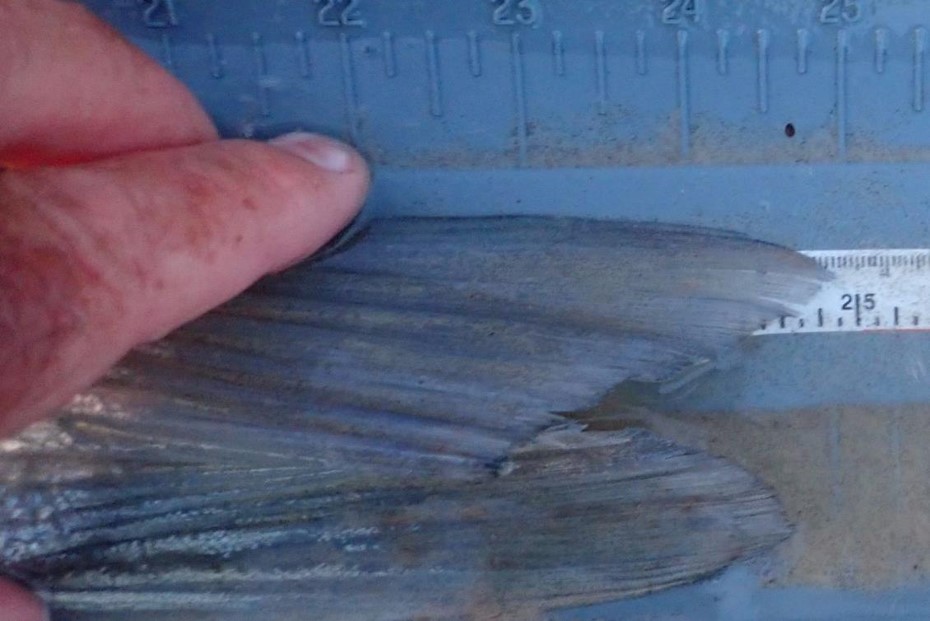
By Daryl Bauer, Fisheries Outreach Program Manager
If you have been reading my blog for awhile, you know I am a proponent of catch & release. I especially believe catch & release of big fish is important for maintaining quality fishing. Subsequently, I often write about proper fish handling. Fish must be released with the best possible chance of survival (e.g. Water is Hot, Clock is Ticking) .
With length limits you will have to measure fish. Moreover, even when I know I am going to release a legal-size fish, I still want to know how large it was. It is easiest, and better for the fish, to get a quick length measurement.
The length measurement pointy-headed, fisheries biologists use is called total length. The total length of a fish is measured with the mouth closed and the tail fin pinched. This is THE correct measurement for length limits and for measuring the official length of record fish. (There is one exception to this total length measurement for Nebraska anglers. The correct measurement for a paddlefish is from the front of the eye to the fork of the tail.)
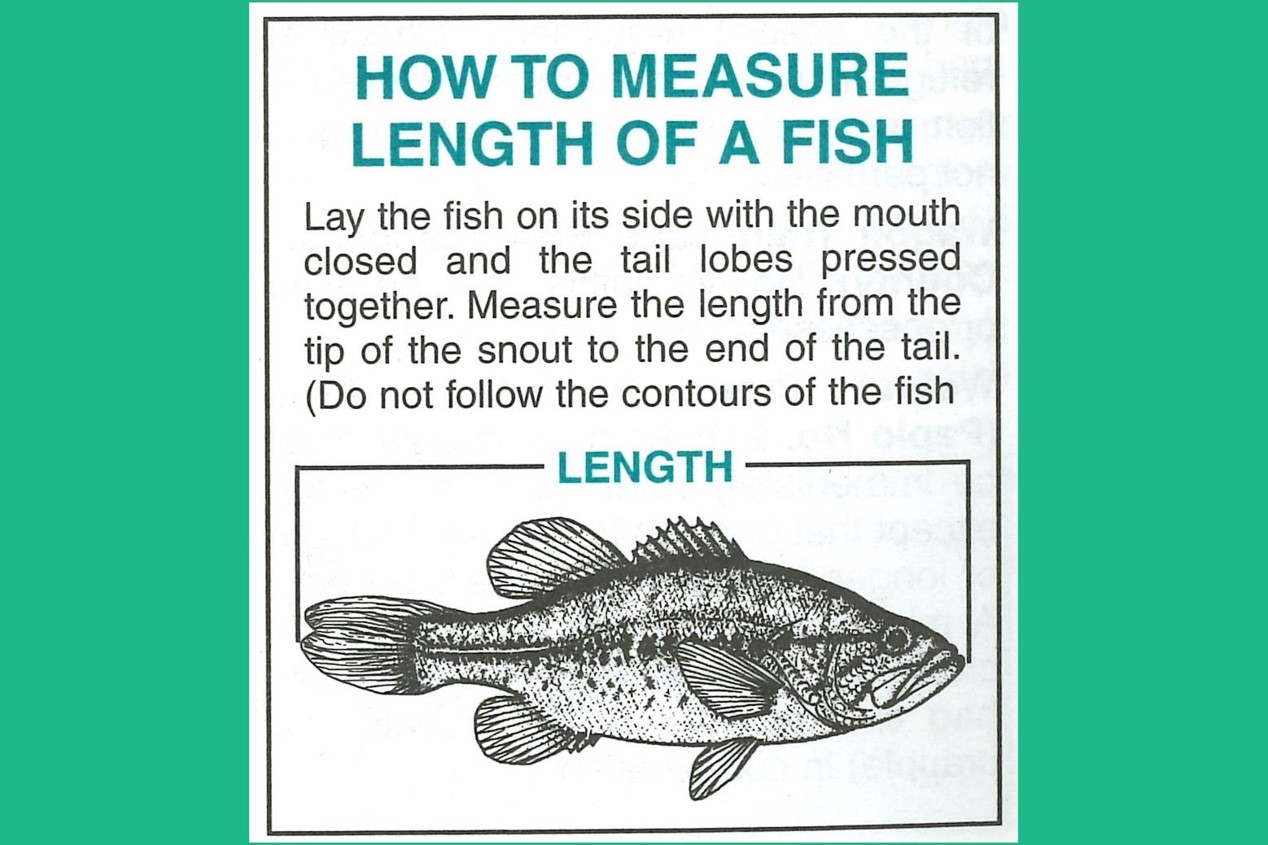
The easiest way to measure total length to lay the fish on a “bump board”.
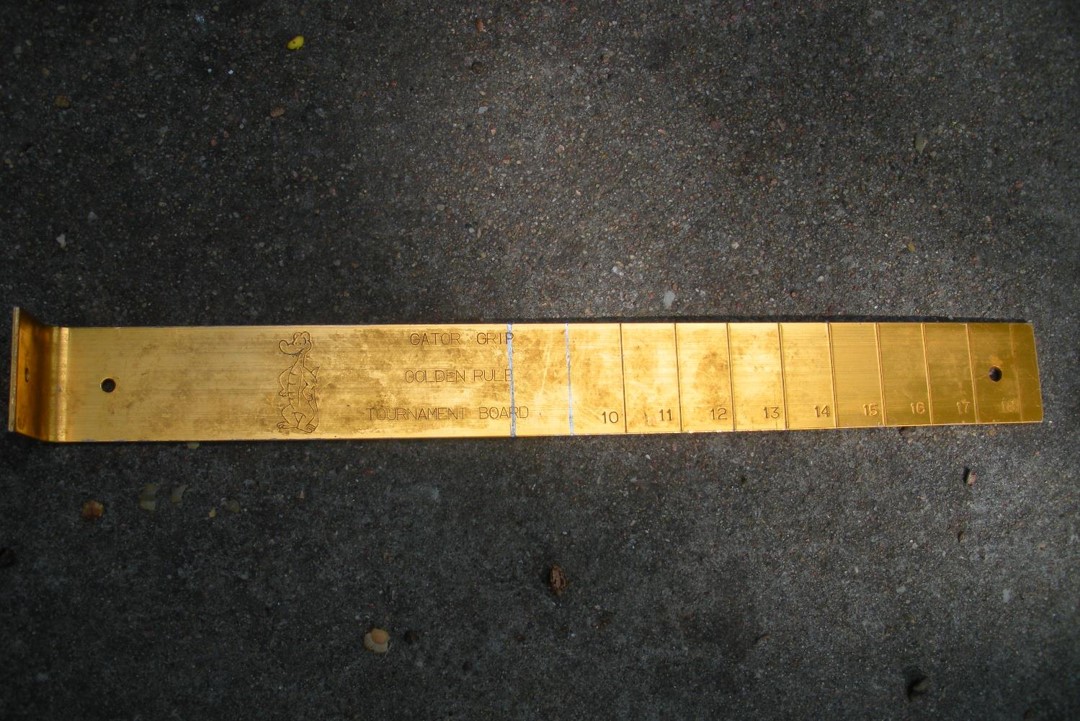
Make sure to wet any bump board or measuring device before laying a fish on them. I use that bump board mostly for measuring panfish and added 8 and 9-inch lines.
For bigger fish you need something more. There are longer, commercially-made bump boards or you can make your own. Bump boards are also best for measuring big fish. Unfortunately, big bump boards are cumbersome to transport. If you have a boat, you probably have room for a long bump board, or a long measuring “pole”. On the other hand, fishing from shore, from a float tube or in a pair of waders likely you will not carry a 50-inch bump board with you.
You can carry a tape measure. There are dozens of tape measures that can easily fit in a tackle box or pocket. Retractable cloth tape measures are small, light and cheap.
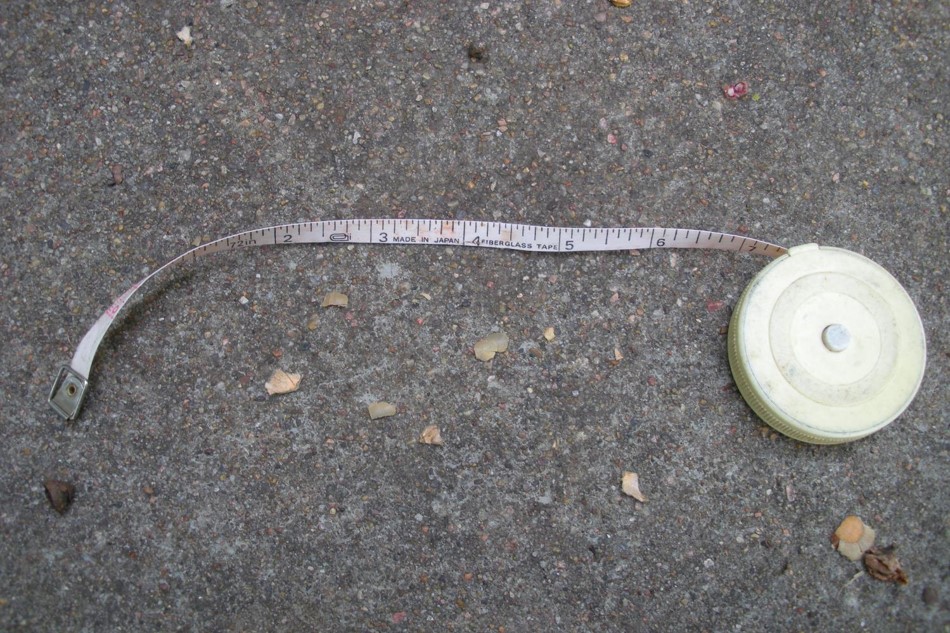
The problem with a tape measure is unless you roll the tape out and place the fish on top of it, you will likely inflate the length measurement by holding the tape over the fish and measuring along its curves. Laying a fish on the tape measure would be more accurate. However, they should NOT be laid on a boat floor or on the bank.
So, let me suggest some other techniques for measuring fish. If you have read my previous posts on fish-handling for catch & release, you will know that I believe a quality landing net is an excellent tool for handling fish to be released. By “quality landing net” I mean a landing net that has rubber mesh or a knotless, rubber-treated mesh. The old nylon mesh landing nets are hard on fish. The nylon mesh is very abrasive to the skin and fins of a fish. Rubber-mesh or rubber-treated mesh is much better.
Once landed, keep the fish in the net, with the net in the water as much as possible. For measuring lengths, I have added a yard stick decal onto the handle of the landing net. Or, a person can mark lengths along the handle of the net.
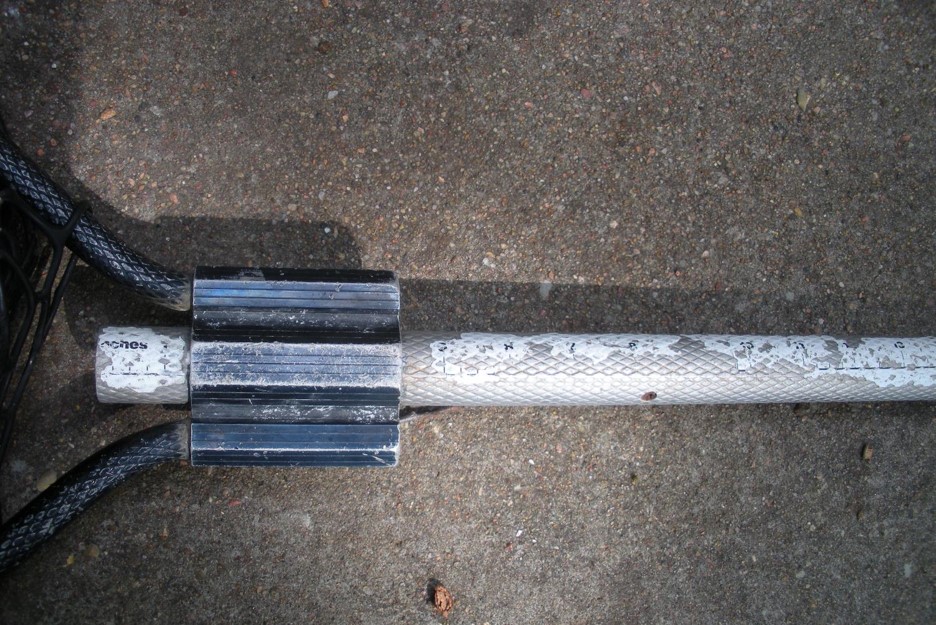
With that ruler on my net handle, I can quickly take a fish out of the net, hold it on top of the handle, pinch the tail and have an accurate length measurement.
One other idea for measuring fish: If you look at one of your rods, there are all kinds of markings on it that can be used as measurement references.
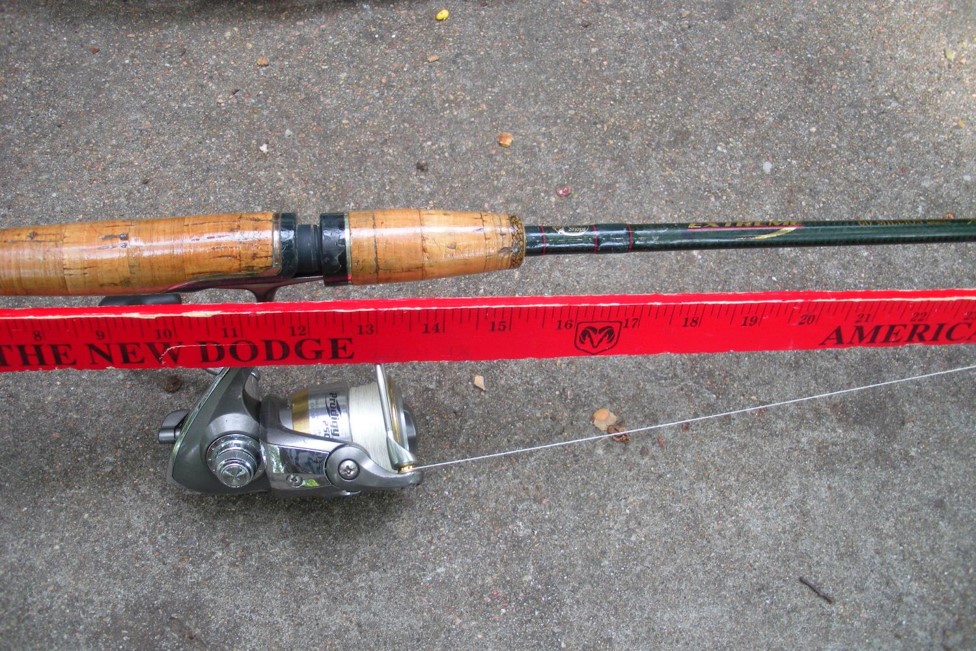
If you cannot remember how long your cork handle is, etc., take a marker and write it on the rod. Or, add some tape to the rod and mark the tape. Again, using your rod as a measuring device will allow for a quick, accurate measurement with no harm to the fish.
Those are some ideas for you. One last thing I will mention here. Yes, I have one of those digital scales. I use it to weigh my turkeys every spring; have not used it to weigh a fish yet. A length measurement is all I want. Given that, I will have a real good idea of how much the fish weighed.
